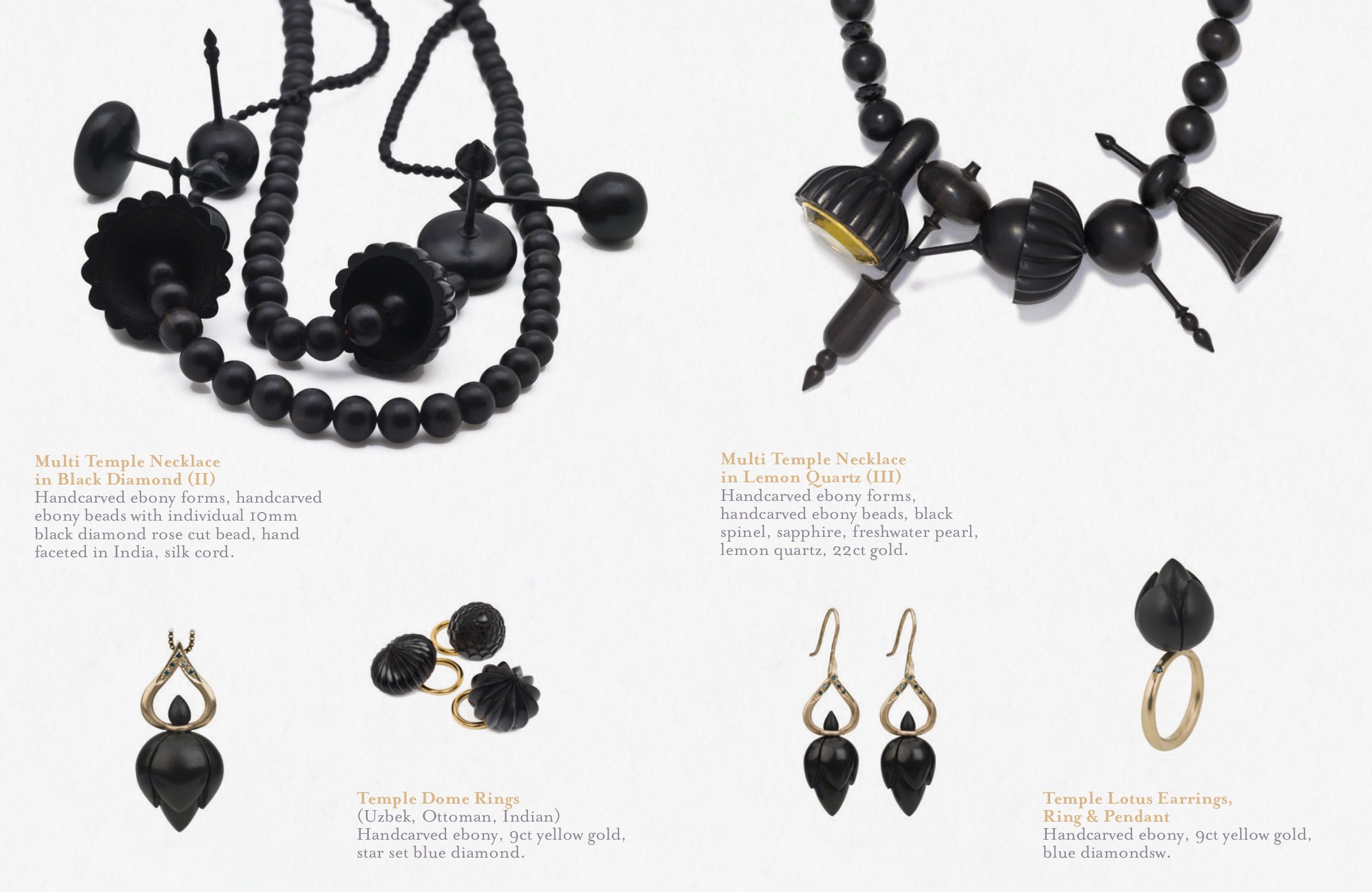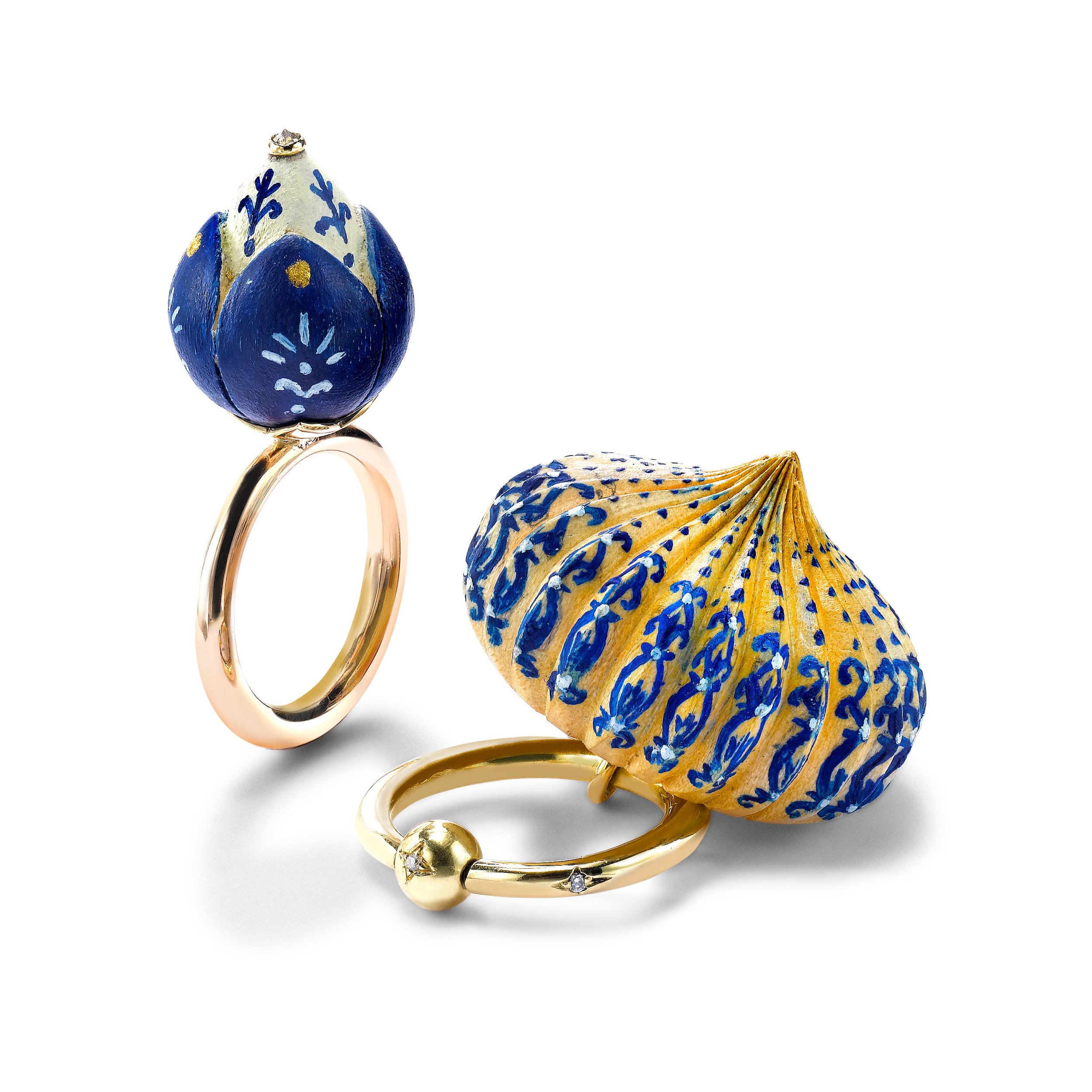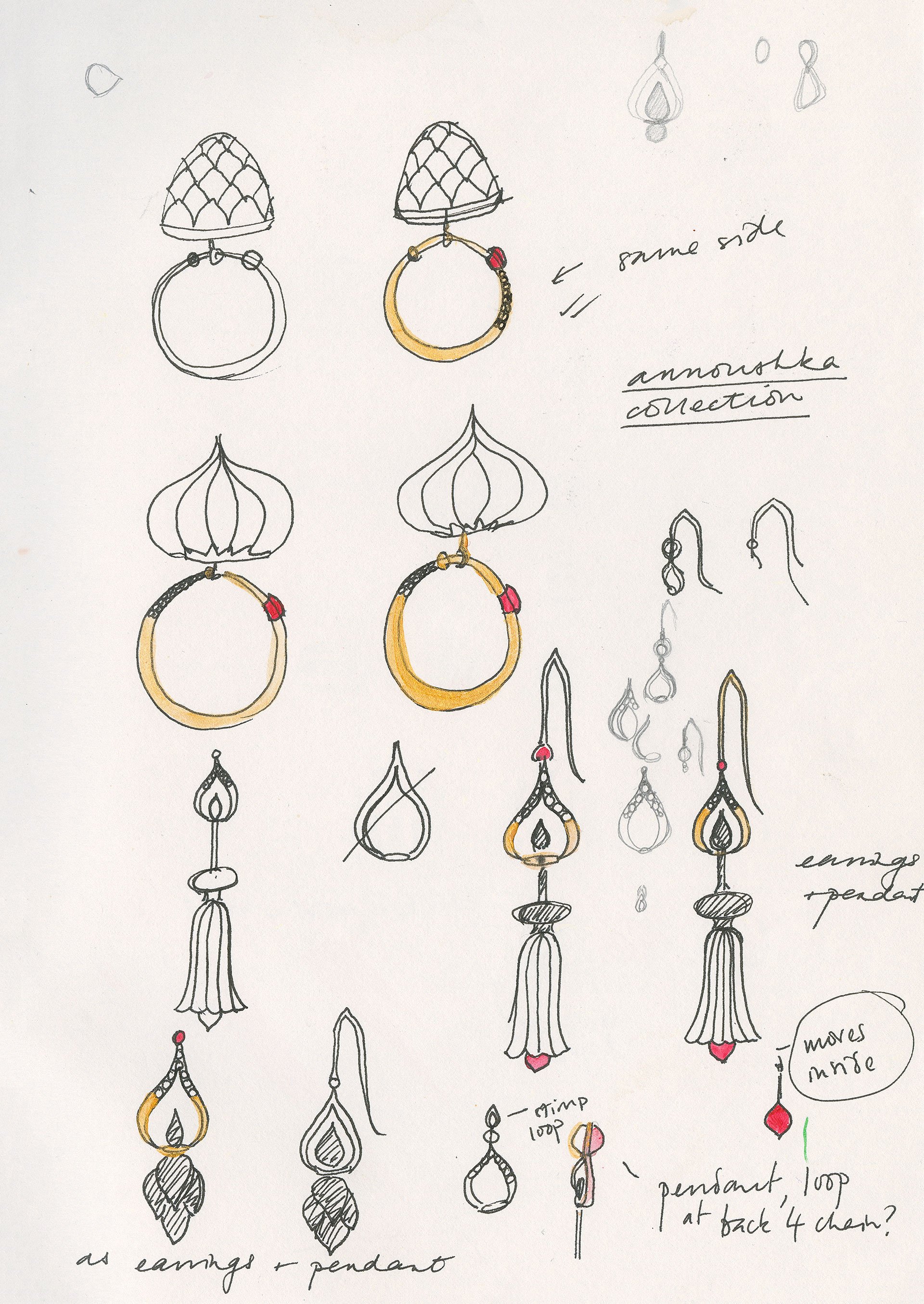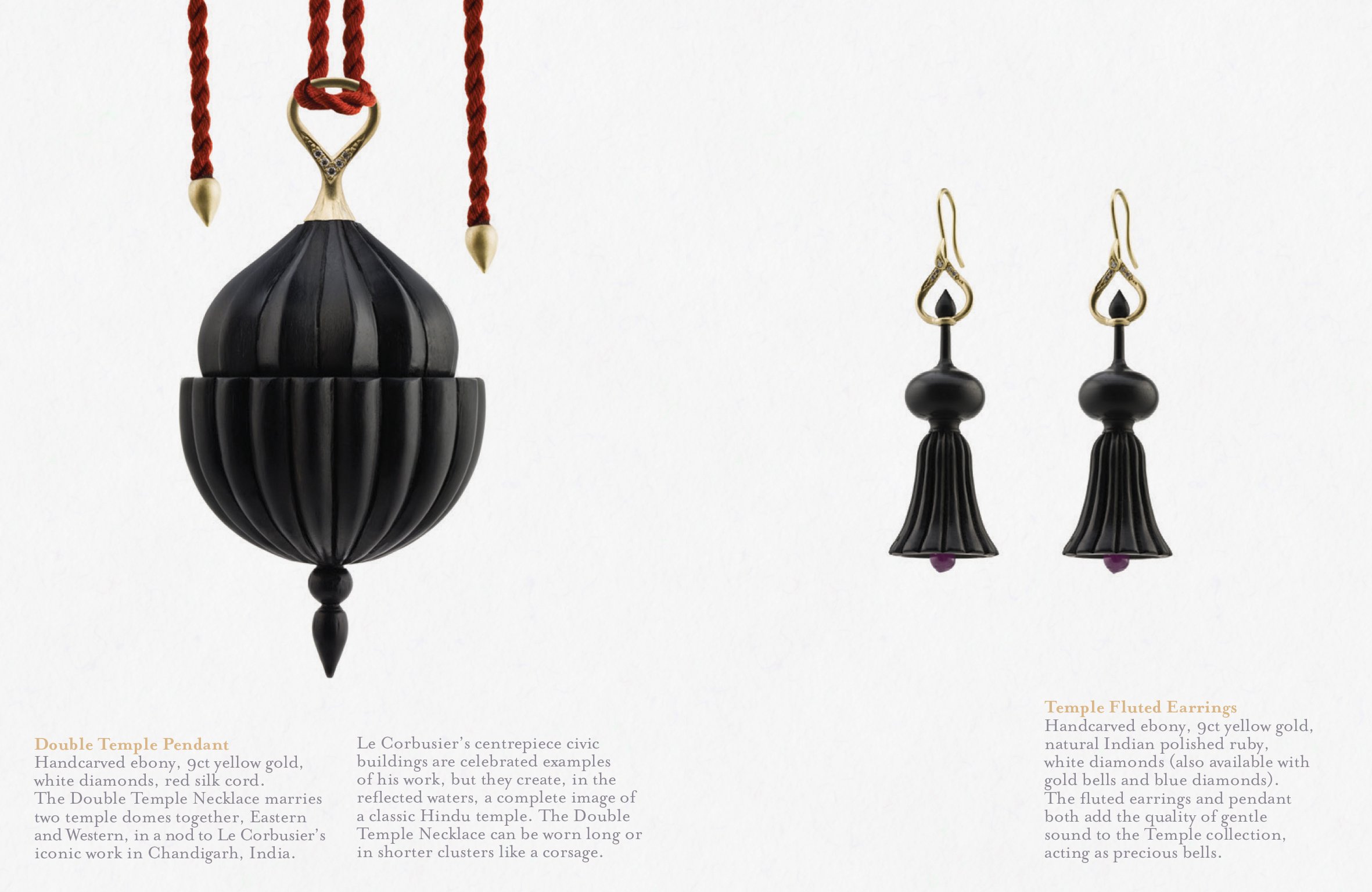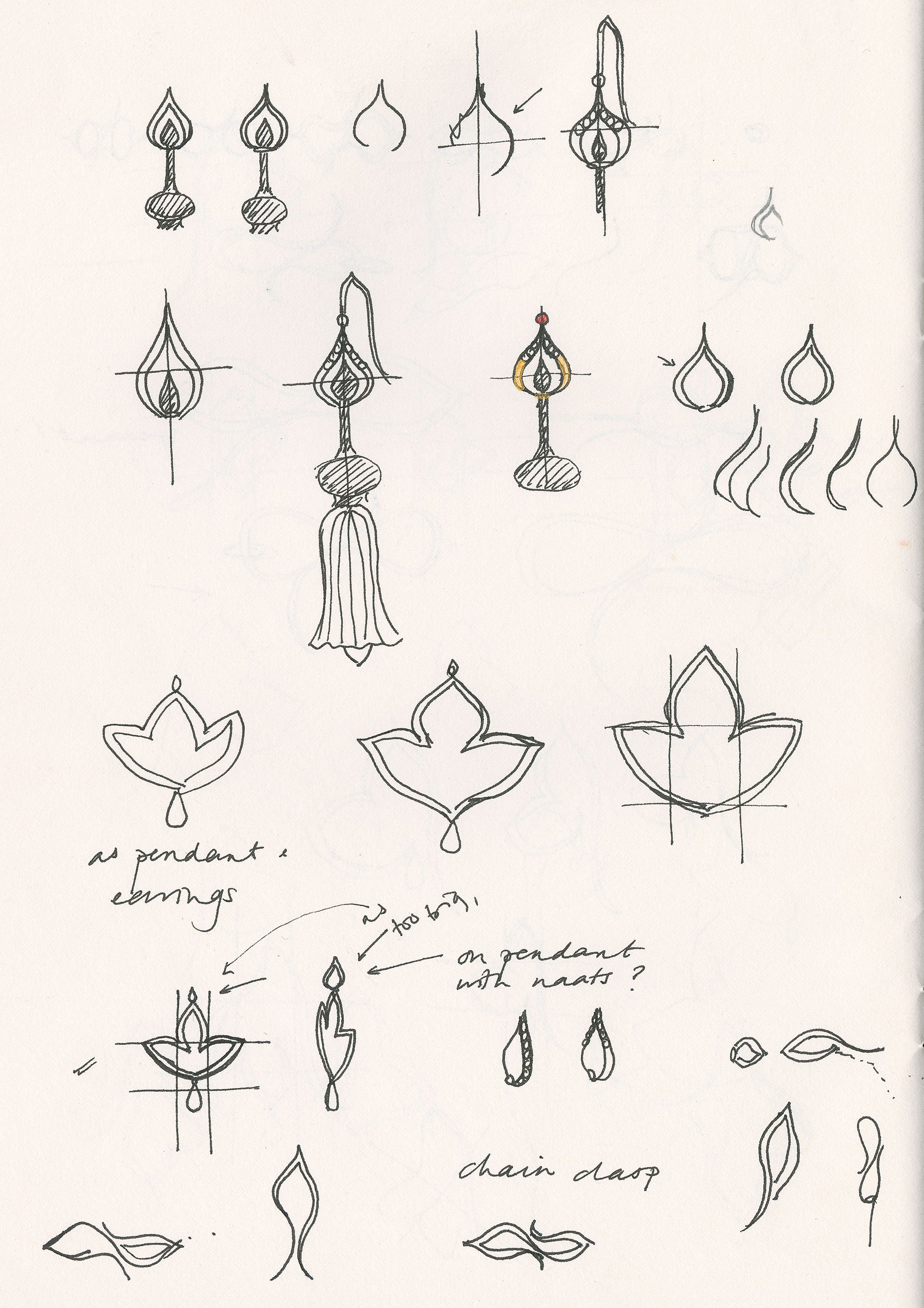
TEMPLE
For generations, the family of Kamal Kumar Meenkar has commissioned handcarved ebony as a template or maquette for clients at the beginning of the process of commissioning 22ct gold and meenakari jewellery.
Later discarded, these maquettes are usually created by a master-craftsman in Jaipur, known to us as Bablu-ji, whose traditional practice is furniture. Alice first came across this work whilst commissioning her first ever series of pieces from Kamal in 2008. Nervously asking what models she may get to see before the work was realised in gold, Kamal told her to return to his studio the next day, where she found a landscape of black wood ebony forms ranged across his window ledge. Too beautiful to discard, and such a powerful counterbalance to the riotous colour of gold and enamel, Alice decided to incorporate them into her collections.
Whilst there is a tradition of ebony jewellery in India, it occupies the disposable end of the market despite the fine quality of the carving and ebony’s status as an endangered wood. The Temple collection re-evaluates these maquettes by creating lasting, fine quality pieces, combining the carving with gold and precious stones, and honoring the high level of skill that Bablu-ji and his father have refined.
The Stone Temple series, developed later, moves the ebony carving in to stone. Bablu-ji worked in stone for the first time in cloudy rose quartz, to create a monochrome story with the black wood. These miniature sculptures are transformed into fresh and striking pieces that look to the work of classic jewellers of the 20s & 30s, many of whom created jewellery carved in stone, as well as inspiration from illustrated periodicals of the same period, such as the Gazette du Bon Ton.

